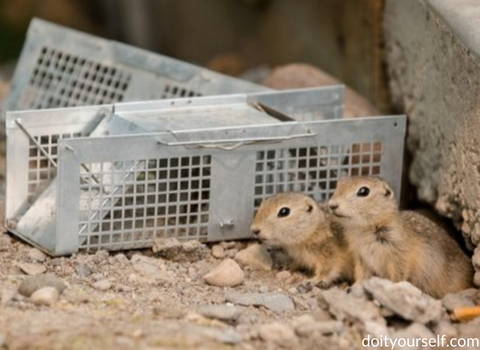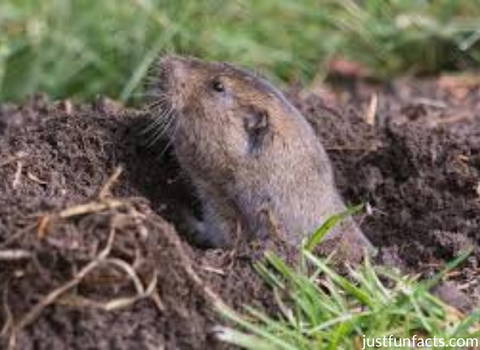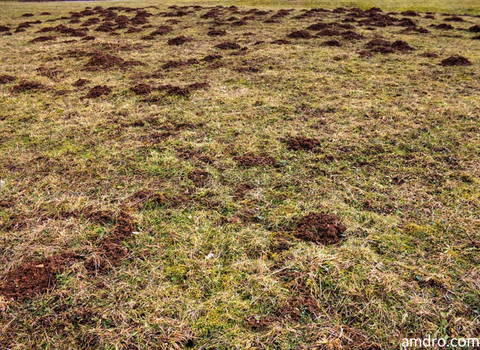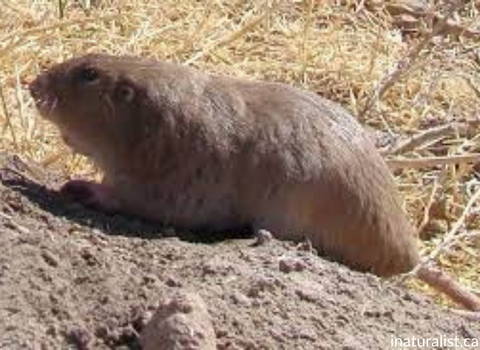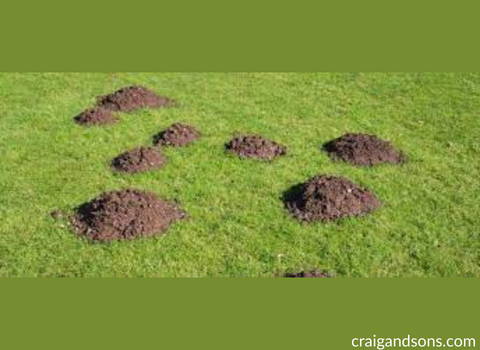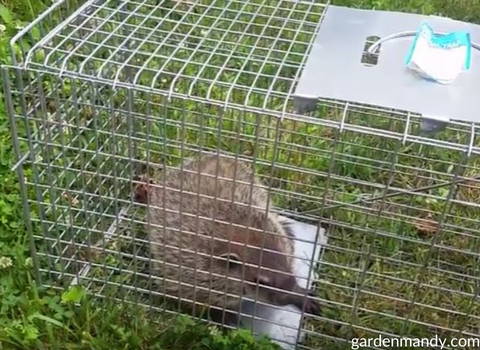How to Trap a Gopher: Damage Prevention and Identification
Gophers may be adorable, but they are also destructive little pests that can wreak havoc on your garden. They can dig up and eat roots, bulbs, and other vegetation. They will chew through anything to create their tunnels, and this can cause immense damage to the roots of your plants. They will also eat your prized garden produce. If you want to keep gophers out of your yard, read on for how to identify if they are in your yard and how to get them out.
Gophers tend to create mounds or hills which is how they mark their territory and how you know they've been around.
Anytime someone finds a mound of dirt in their garden, it's safe to assume gophers have been there digging up the soil because that's how often these little guys are active - especially during springtime when all the earthworms come out of hibernation.
They love moist climates such as those found near beaches where sandy loam soils make tunnelling easy for them. They like this type of soil because it is easier for them to dig into with their claws than other types.
Using Traps to Catch Gophers
There are several popular ways to trap gophers. These should be baited with fresh vegetables and small amounts of peanut butter before being placed in a garden area that is known to have evidence of gophers.
Gopher traps may also include an entrance tunnel that leads back underground where there will be no chance whatsoever for escape once he has been caught. The gopher tunnels lead down into a box that the animals cannot climb out of; they are trapped inside until you come along to release them from their misery.
A gopher trap needs not to be expensive either - an empty tuna can with holes poked through one side and inverted on top of a wooden board (or similar) works well enough if you've got sugar mixed into ketchup inside since this makes what's already a tasty treat even more appealing. If you don't want to use something as simple as a can of ketchup, you can also use peanut butter or bacon.
There is always some danger when dealing with this type of pest control device - so make sure it's used only if children or pets won't disturb or get into it.
How to Avoid Gophers in Your Garden
The best way you can avoid having gophers in your garden at all is by planting what they don't like such as yarrows alongside any new plants.
If this doesn’t work then feel free to try some traps but remember – once one gopher is caught, there's a good chance that others will start showing up to take its place.
The best way to prevent gophers from infesting your garden is by keeping it clean and well-maintained, using organic gardening methods such as composting, mulching, weeding, and watering regularly. If you have already identified that these animals are in your yard or acreage, it is best to contact a professional pest control company to get rid of gophers because they will be able to provide you with the most effective long-term solution.
Gopher Trapping to Prevent Damage
How do you trap a gopher? You can make your own live bait by scooping some dirt up from the mound that they created and using it in conjunction with flour or oats. Add this mixture into an empty jar, smearing it on the inside of the lid so that when he goes for it - his teeth get stuck there.
You will also want to place traps near any buildings close by where these pests tend to dwell because if they are living nearby then chances are good, they've been tunnelling under them as well.
The best type of gopher trap is a live trap made of wire mesh that prevents tunnels from going deep enough underneath ground level. This type of gopher trap also prevents damage from occurring below the surface.
You can also use a metal bucket or even an old coffee can as your gopher trap. Once you find and set up your traps, just be sure to check them on a regular basis for how many gophers have been caught.
Below are some products we recommend for trapping gophers:
How to Tell that There are Gophers in Your Garden
The best way to tell if there are any gophers around your area is by checking the surface area for mounds and how deep the tunnels are.
If you find a gopher mound, check how wide it is to see how far they've gone. If there's a gopher tunnel that goes into this mound but there are no other mounds, then chances are they're just passing through on their way elsewhere. If there's more than one hole in the ground or if it looks like someone dug up your garden with a shovel - then gophers have been at work here.
Gophers can cause damage by eating roots of plants and bulbs because these types of vegetation make up most of what they eat. Since they chew through anything to create their tunnels, this allows them to get from one place to another quickly without having to surface too often for air as well as marking territory.
Identifying the Gophers Infesting Your Garden
There are different types of gophers that may be infesting your garden. Here are some examples of how to identify them:
California Gophers (also known as the Stephens' beaver)
These can be identified by their dark fur and tail, which is usually twice as long in proportion to its body length. They have a pointed snout with small ears, whiskers on top of their head like many other rodents do, and a short tail.
Desert Pocket Gopher
This type has relatively small ears but is larger than the Stephens' beaver in size, with long claws on its front paws that may help distinguish it from other types of gophers. The fur colour of desert pocket gophers can vary from light brown to dark brown, and there are white patches around its eyes that resemble glasses.
North American Gopher
It is the largest of all gophers and can grow to be nearly three feet long from nose to tail with a weight over 15 lbs., making it much larger than other types. These are also known as Richardson's Ground Squirrels in some parts of North America because they have similar fur colouring but do not have the same tail length as a Stephens' beaver.
How Do Gophers Damage My Garden?
Gophers will eat roots of plants as well as bulbs which is how they cause damage.
Mounds are created by the soil that has been dug out from underground tunnels in order not only to create their tunnel but mark territory and show where they've already been digging too. This means every fresh gopher mound around could potentially have holes underneath it so this type of land - at least near buildings should never be walked over without shoes on because if there's any dirt left behind then more mounds may be created where you'd not want them to be.
Gopher mounds can also have a smell that is very strong and unpleasant which means if there's any in your garden then it will need to be dealt with as quickly as possible, so the odour doesn't make things worse for how people feel about being outside near or on top of mounds.
Gopher damage causes plants to wilt, dieback, and may even affect how well other plants grow too because they'll compete for water and nutrients. There are many ways in which gophers harm gardens, but some find this damage more difficult than others depending on how much time has passed before addressing it, what type of plant life surrounds the area affected by the mound-making pests and how big the gopher mound is.
When building traps for these animals, be sure not to put them at surface level or they will not work. Gophers are very sensitive to odours, and the best bait for gopher trapping is a mixture of peanut butter and fresh fruit or vegetables like carrots that have been chopped up with their tops removed so as not to scare away smaller animals from taking food in traps designed for gophers.


